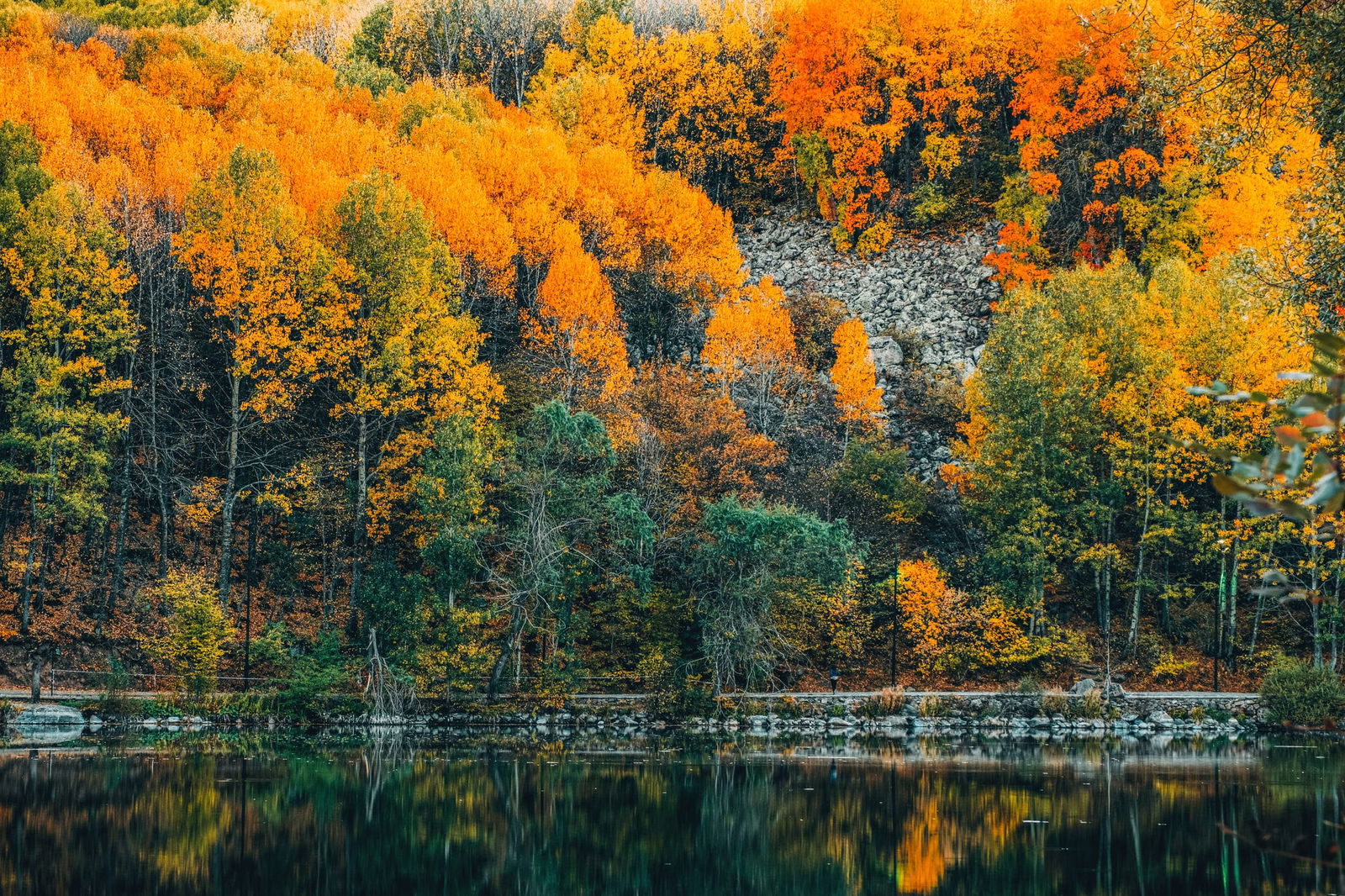The splendor of nature: Yedigöller National Park

When autumn rolls around, Yedigöller comes to the minds of many in Türkiye. This national park is gorgeous in any season but particularly in the fall, when a riot of colors awaits visitors. Beech trees are most common in Yedigöller National Park, but there are also hornbeam, oak, larch, alder, Scots pine, elm, fir, yew and linden. Animals such as deer, roe deer and boar, as well as foxes, bears and wolves, live in and around the park, as do more than 100 types of birds, including wild ducks, wild pigeons and partridges. Hiking and biking trails lead to waterfalls, natural terraces, and the seven lakes that give the region its name.
Yedigöller became a national park in 1965. In 1969, the first trout station in Türkiye was established in Yedigöller, making it a destination for amateur anglers.
In fact, the park offers numerous activities, including picnics, nature walks and bicycle tours, in addition to fishing, bird-watching and, of course, photography. But it is especially notable for its popularity among campers.
Along with a number of picturesque campsites, there’s an 18-bungalow facility that can accommodate up to 90 people. There is also a small shop within the national park selling tea, coffee, etc.
How to get to Yedigöller

Yedigöller National Park is in a hilly area of the western Black Sea Region. It’s south of Zonguldak, east of Düzce, and about 40 kilometers north of Bolu province. The Yedigöller basin, covering an area of approximately 1,650 hectares, was declared a national park in 1965 and taken under protection. As its name indicates, there are seven lakes in the park; the lakes are connected by both surface and groundwater. Their distance from north to south is approximately 1,500 meters. The lakes were formed when sliding rocks in the basin closed the valley entrances.
Most frequently, visitors access Yedigöller via Mengen, Bolu.
The park can be reached from the Yeniçağ junction, which is approximately the 150th kilometer of the Istanbul-Ankara highway, and from the Bolu city center at the 190th kilometer of the same road. The Yedigöller-Bolu route sometimes closes in winter, due to snow, so the Yeniçağ-Mengen-Yazicik road is often preferred. Almost 30 kilometers of both routes are in the form of a stabilized road, so we do recommend cautious and careful driving.
Magical Autumn: Camping in Yedigöller

The lakes of Yedigöller are Büyükgöl, Seringöl, Deringöl, Nazlıgöl, Küçükgöl, İncegöl and Sazlıgöl. These lakes are on two plateaus with an altitude of 100 meters between them. The largest lake, Büyükgöl, also features a trout farm.
Areas reserved for camping are near walking and hiking trails leading to various parts of the National Park. Explorations will take visitors to the Kaplankaya observation deck, with a panoramic view of the seven lakes and the unique landscape, to the Black Pine Memorial Tree and to a deer reserve. In Köyyeri, there are ruins from the Early Byzantine Period.
Magnificent views, natural beauty, seven lakes – and a pure sense of peace and calm. All good reasons to visit Yedigöller National Park!
Düzce-Yedigöller-Bolu cycling route

A special treat for bicycling enthusiasts is the 75-km long Düzce-Yedigöller-Bolu cycling route. The route can generally be completed in two days, camping overnight in Yedigöller.
The route starts in Yığlıca, Düzce, near the Saklıkent Waterfall and the Sarıkaya and Gökçekaya Caves. After leaving Yığlıca, the path goes into woodland, with some uphill stretches, and then directly through Yedigöller and on to the Bolu city center.
Stories knock at your door!
You can easily download images, and share on your social media accounts via your smartphone. Just press and hold the story, and save or share the image you have selected via the menu that appears.




